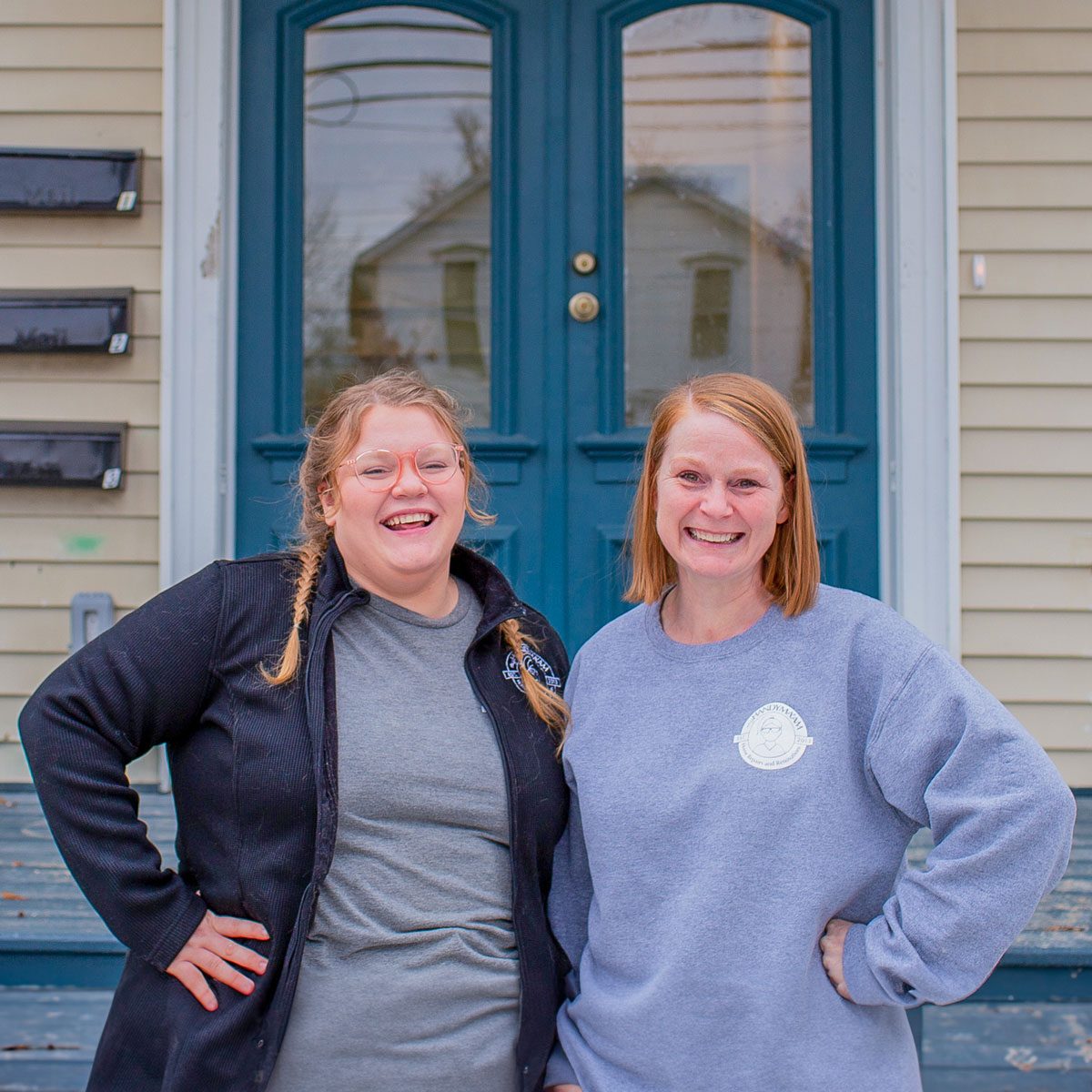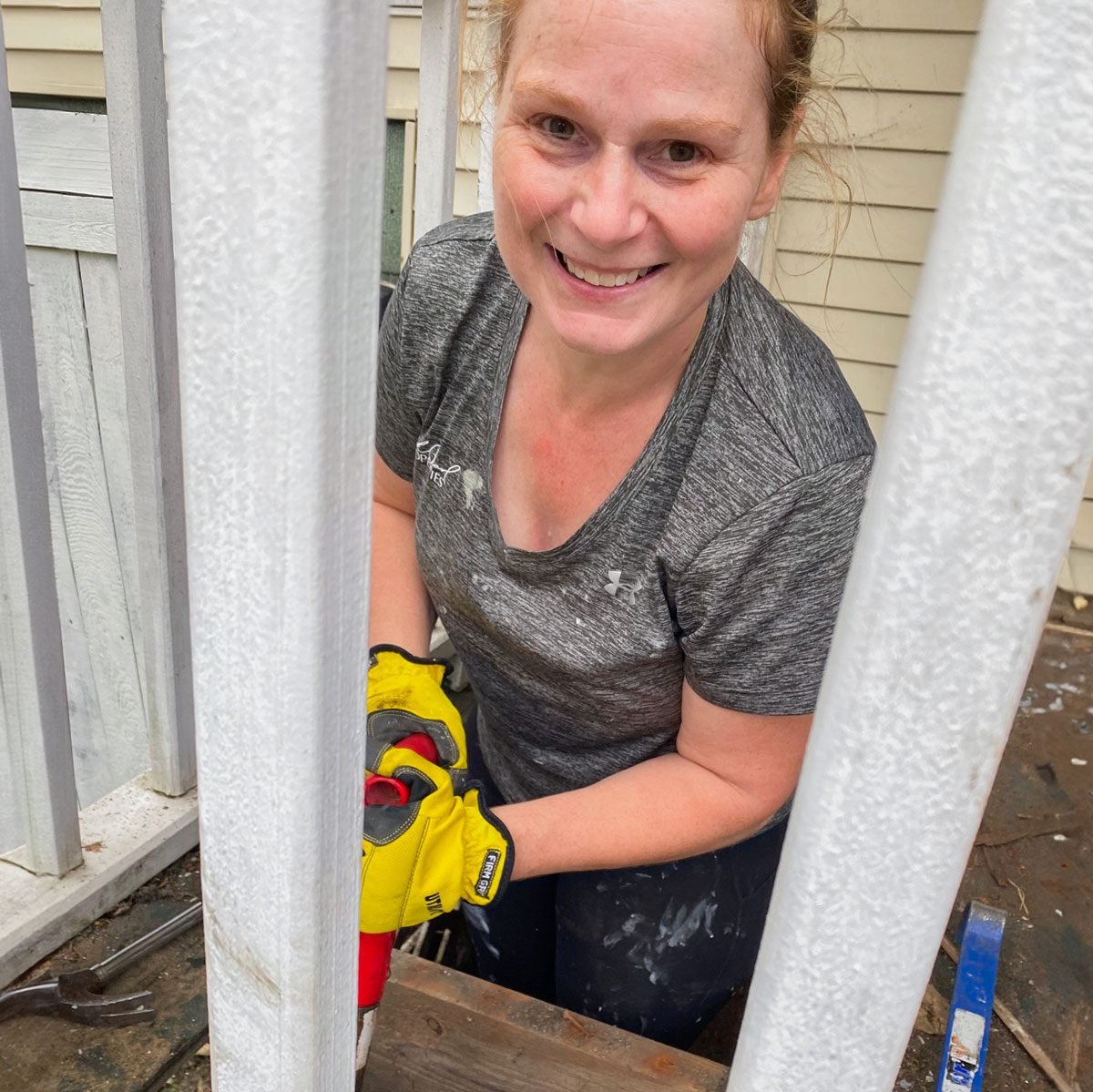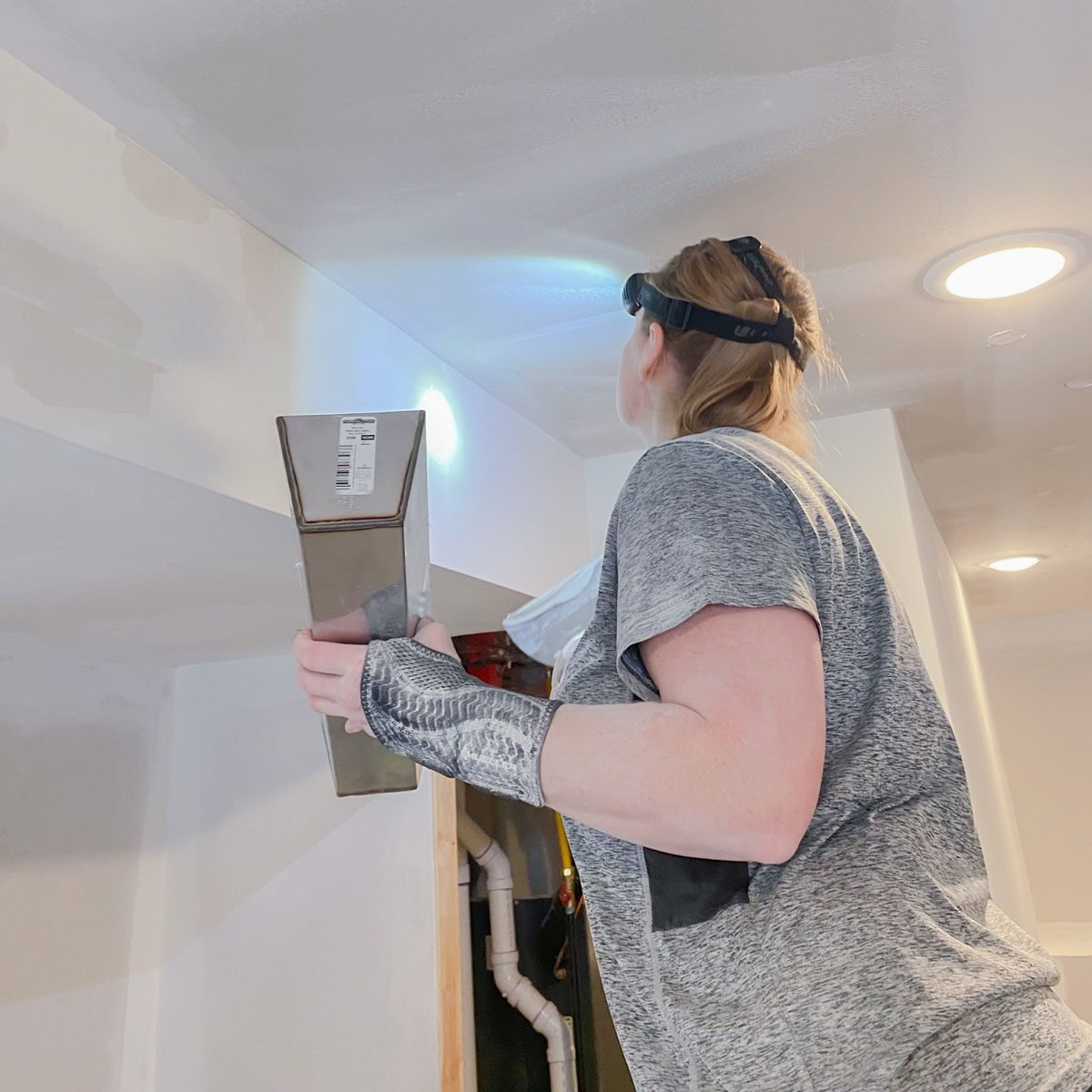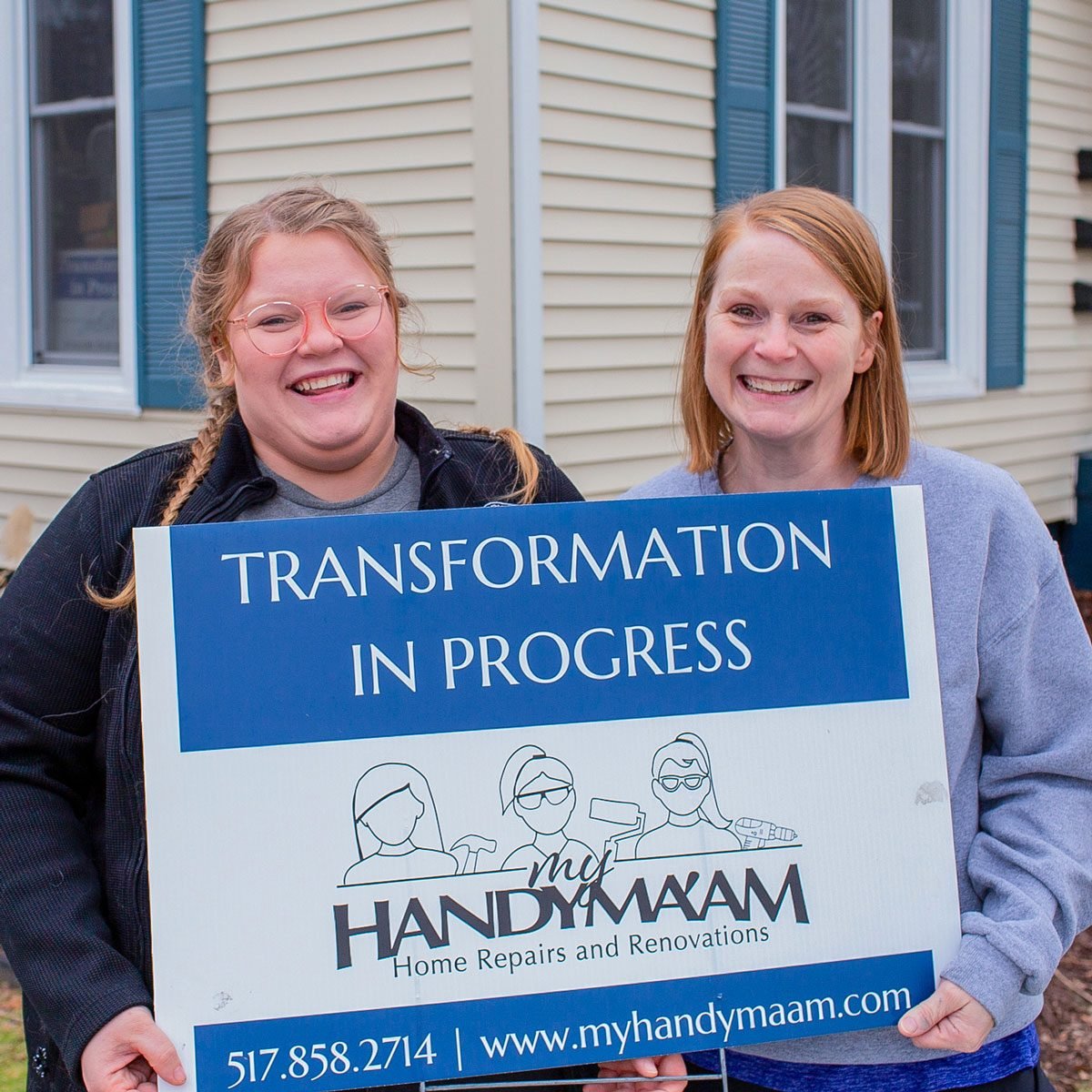This FH series introduces readers to a few of the women who make up 11 percent of the construction workforce in the United States, spotlighting stories of their careers in the field. Know someone we should feature? Email us here.
Samantha Pearl was 25 years into an administrative career in health and human resources when she and her husband Jim bought a 175-year-old house in Michigan and began tearing it down to the studs.
The next month, pandemic restrictions hit. With a sudden lack of contractors, they had to jump into the renovations themselves. Their daughter Emily, home from college for spring break, also helped. They ended up enjoying it, and Samantha and Emily soon tackled a second full-house renovation.
“Emily and I spent nine months working full time on that renovation project,” says Samantha Pearl. “We both fell in love with the work.”
Samantha soon secured her residential builder’s license. Together with Emily, they founded My Handyma’am Home Repairs and Renovations, which now has five employees working in the field. They’ve also recently started the Facebook group How to Handyma’am, where they teach simple home projects and provide women a forum to ask questions about home repairs.
We asked them for their thoughts on the state of the home repair and renovation industry.
Q: How has working as a mother-daughter team been going?

Samantha: It’s been wonderful. We complement each other well. Emily is an artist and I’m more of a traditional handyperson. We also tend to finish each other’s sentences. It’s good to work with someone who shares part of your brain because we’re able to know what to hand the person next and what we’re thinking.
Emily: Plus, we really have a spark for it. We love to build things, we love to fix things and we love to make things beautiful.
Samantha: And we both have customer service mindsets, so we’re always thinking about how our behavior affects our customers’ comfort level. There’s a lot of joy in solving problems for people, and loving what we do makes customers tend to love us, too, and have a high comfort level having us in their homes.
Q: How did you find your women employees?
Samantha: We offered apprenticeships for anyone interested in learning. One is a high school senior enrolled in a trades program. Another is a professional glassblower in her 40s. The third had just graduated from college, with a biology degree, and was trying to decide what to do.
We provided a living wage and a full set of tools to make it as easy as possible for them to make the leap. For the first six months they worked alongside us, and now they operate independently.
They’re pretty remarkable, fun to work with and excellent at solving problems. Their team dynamic benefits us, and it benefits our customers. You don’t have to worry about having a pool of qualified female candidates if you hire people for character and aptitude, then teach them the specific skills.
Q: Is your customer base mostly women?

Samantha: Yes, probably 90% of our customers are women over age 50. Some are widows, single or divorced. Others just have husbands who aren’t able to or don’t want to tackle the projects.
Many of them call us specifically because we’re females, and it can be unnerving inviting a stranger into your home. And that goes both ways. We also feel a certain level of safety when doing estimates and working in women’s homes.
Emily: Our approach also attracts women who have been talked down to by tradespeople, or who have felt like they didn’t understand what was going on. We encourage clients to observe and ask questions. It’s delightful collaborating with them and creating beautiful things that match the image they had in their mind.
Q: What are your more common types of projects?
Samantha: One of our taglines is, “We make it beautiful, We make it work.” That describes the two sets of projects that we do: artistic ones like painting, built-in cabinetry and backsplashes; and then practical stuff like repairs and building closets, fences and sheds.
Honey-do lists are another specialty. Tradespeople tend to avoid them, but there are a lot of older people who have a running list of things they need done in their house. And who do you call if you have a door that doesn’t close smoothly or you want someone to check if there’s water in the basement?
We love helping people with their random collection of needs. There’s a whole underserved niche in solving long lists of small problems for people.
Samantha: And since we’re actually licensed builders, we fill a unique niche where we can offer both small handy services as well as repairs and renovations that require a license and permits. Plus, we’re insured and bonded.
Q: What are some of your more memorable projects?
Emily: One time a client showed us a blue Lego, and wanted an ombr tile backsplash based off that color. Immediately my brain was imagining everything, and I was so excited about it.
Color consultations are one of my specialties. I put together six or seven digital mockups, then the client and I got in the weeds of design together. It was really fun, and at the end of the project they said it looked exactly like what they imagined beforehand.
Samantha: We built a 256-square-foot deck for a couple who liked to throw backyard parties. It had an unusual shape to meet their property lines, and they didn’t want any short boards. We ended up handling 20-foot-long pieces of lumber.
It was 40 degrees and raining. We were working in piles of mud and constantly moving a pop-up tent to keep the saw dry, but not us. But I still sometimes go back and look at those pictures, because it’s so satisfying to see how beautiful the deck turned out.
Q: What challenges have you faced working in a male-dominated trade?

Emily: Sometimes there’s a masculine old-boys-club environment, which can make it feel like there’s not much space for women. I’ve even had a lot of guys at the hardware store ask if I know what I’m doing, or if my husband knows I’m there, which feels straight out of the 1950s.
But we’ve made ourselves a great space where we can be feminine in the field. And the skills of femininity, like empathy and attention to detail, have really opened up great opportunities.
Samantha and Emily Pearl Bios

Samantha Pearl is a licensed residential builder in St. John’s, Michigan. Her daughter Emily Pearl Reist is a licensed residential builder and visual artist. Together they make home repair and renovation projects that are beautiful and functional, through their business My Handyma’am.
They also teach women how to DIY through their Facebook group, How to Handyma’am.
Writer Karuna Eberl Bio
Karuna Eberl is a regular contributor to Family Handyman. She spent the last 25 years as a freelance journalist and filmmaker, telling stories of people, nature, travel, science and history. Eberl has won numerous awards for her writing, her Florida Keys Travel Guide and her documentary, The Guerrero Project.
Did you miss our previous article...
https://rsssuperfeeds.com/life-hacks/i-am-an-avid-hiker-and-i-wear-the-altra-lone-peak-hikers-on-almost-every-trail






